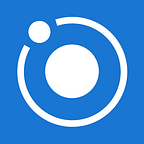How to optimize your radiology shift with Orbit Discovery
In every specialty, at every stage of career — residency, fellowship, attending — the efficiency of your work directly impacts the quality of your patient care, your work-life balance, and your end-of-day energy. Would you use a PACS viewer without a hanging protocol? Would you sign up for a shift without dictation software? Younger radiologists are demanding better software as part of their work experience, and Orbit Discovery hits the spot by letting them automate their Ddx search and expand their exposure to Core-relevant radiology literature, powered by AI they can install right in the browser. This week, residents and fellows at UCSF, Stanford, and Johns Hopkins will get early access to this incredible next-generation radiology reference technology.
Orbit Discovery is a hanging protocol for Ddx and articles that lives in your web browser — it automatically hangs the Ddx and related articles you should consider at the bottom of your browser, based on the current reference article you’re reading, whether the article is on Radiopaedia, Radiographics, AJR, PubMed, or any other peer-reviewed radiology reference. Imagine having a second pair of eyes helping to make sure you’ve considered the most relevant Ddx and reputable peer-reviewed sources, and to reduce your cognitive load with the manual task of sifting the web for actionable information. That’s what this combined radiologist-engineering team based in Berkeley, California was aiming for when they designed Orbit Discovery.
Radiology IT massively impacts our daily experience as radiologists
We’ve all seen good and bad examples of radiology IT, and we’ve experienced the impact on our happiness and our ability to provide high quality patient care. Here are a few examples you might have personally experienced.
Save an hour of work per day — and save yourself from Sad Desk Lunch
If you’re spending seconds on on every case with a repetitive task that could be automated, that can add up to an hour or more of waste per day. Consider hanging protocols for example. If you’re manually selecting the current and prior images to review for every study, that can add an average of 60 seconds to each case in a mix of plain films and cross-sectional imaging. If your ten-hour shift includes 100 accession numbers, that’s 60 sec x 100 cases. In other words, by automating 60 seconds of manual labor per case, you can save 100 minutes of time in your day.
How could you spend that extra 1.7 hours? Improve your reports. Have lunch with your colleagues instead of your usual sad desk lunch. Getting a workout done. Spend time with your friends and family.
Enhancing Core Exam Preparedness
A few years ago, experiments by researchers at Stanford and NYU revealed that the words that babies are exposed to determines their mastery of language in later years. The same is true of machine learning algorithms — their ability to perform is determined strongly by the history of exposure to training data. For radiology residents, this means that differences in opportunities for incidental exposure to knowledge through conversations in the reading room, at noon conference, or elsewhere could modulate outcomes on standardized exams like the Core Exam which challenge the mastery of radiology knowledge in the later years of training. As an adjunct to other sources of incidental exposure, Orbit Discovery injects a diversity of exposure to literature that’s directly in line with what residents are seeking to learn in the reading room, at point of care. While the direct impact on standardized exams like the Core Exam remains to be quantified, the earlier research on exposure and education suggests powerful possibilities.
Search once and done — automating your search
Every few cases, there’s something you want to search on Google — to figure out a sensible Ddx or followup recommendation. If you’re using Google or PubMed, you’ll need to wade through non-radiology search results. If you’re using a radiology-specific database like StatDx, you’ll find yourself clicking back and forth between articles and search results without the power of Google search.
With Orbit Discovery, you can search one and done. Instead of wasting time cycling between search results and pages, your Discovery Bar automatically pulls in the Ddx and related articles you need based on the first page you visit. This means you can spend more time deeply considering your image interpretation, and decrease the repetitive cognitive load that comes from scanning through search results and clicking around.
Here’s an example. Try searching “epiploic appendagitis ct”, and click on the Radiographics article near the top of your search results.
Here’s what this RadioGraphics article looks like in your Chrome browser with Orbit Discovery on your PC or Mac:
To get a more complete view of the Ddx and related articles, click the “View All” button, and an overflow menu slides in from the left.
Bottom Line
Hopefully you’re already working in an optimized radiology IT environment rather than a hellish reading room where you’re wrestling your software every few minutes. Either way, automating your Ddx search with Orbit Discovery should bring you some relief in the form of more informed reports and up to an extra hour per day.
— Orbit Staff
support@orbitcme.com
